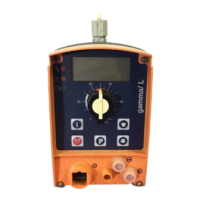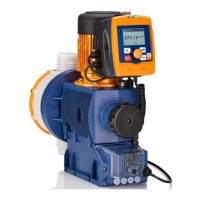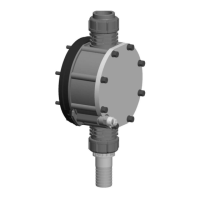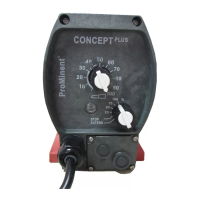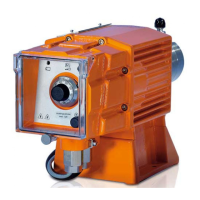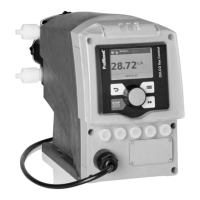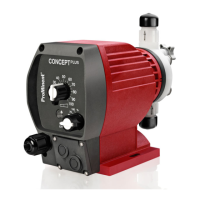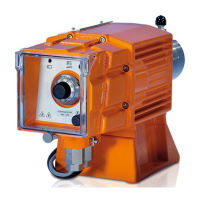15 Troubleshooting
WARNING!
Warning of hazardous feed chemical
Should a dangerous feed chemical be used: it may
escape from the hydraulic components when
working on the pump, material failure or incorrect
handling of the pump.
– Take appropriate protective measures before
working on the pump (e.g. safety glasses,
safety gloves, ...). Adhere to the material safety
data sheet for the feed chemical.
–
Drain and flush the liquid end before working
on the pump.
CAUTION!
Warning of feed chemical spraying around
Feed chemical may spray out of the hydraulic com‐
ponents if they are tampered with or opened due to
pressure in the liquid end and adjacent parts of the
system.
– Disconnect the pump from the mains power
supply and ensure that it cannot be switched
on again by unauthorised persons.
–
Ensure that the system is at atmospheric pres‐
sure before commencing any work on hydraulic
parts of the system.
WARNING!
Fire hazard with flammable media
Only with flammable media: They can be ignited by
oxygen.
– The pump may not work if there is a mixture of
feed chemical with oxygen in the liquid end. A
specialist may need to take appropriate actions
(using inert gas, ...).
15.1 Faults without a fault message
Fault description Cause Remedy Personnel
Pump does not prime
in spite of full stroke
motion and bleeding.
Minor crystalline
deposits on the ball seat
due to the valves drying
out.
Take the suction hose out of the
storage tank and thoroughly flush out
the liquid end.
Technical per‐
sonnel
Serious crystalline
deposits on the ball seat
due to the valves drying
out.
Dismantle the valves and clean them
- refer to the "Repair" chapter.
Technical per‐
sonnel
Fluid escapes from the
backplate.
The screws in the dosing
head are too loose.
Tighten the screws in the dosing
head crosswise - refer to the "Repair"
chapter for the tightening torque.
Instructed per‐
sonnel
Safety information
Faults without a fault message
Troubleshooting
105
DosingPump.ir
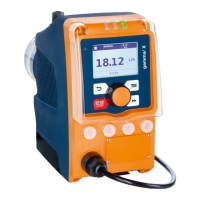
